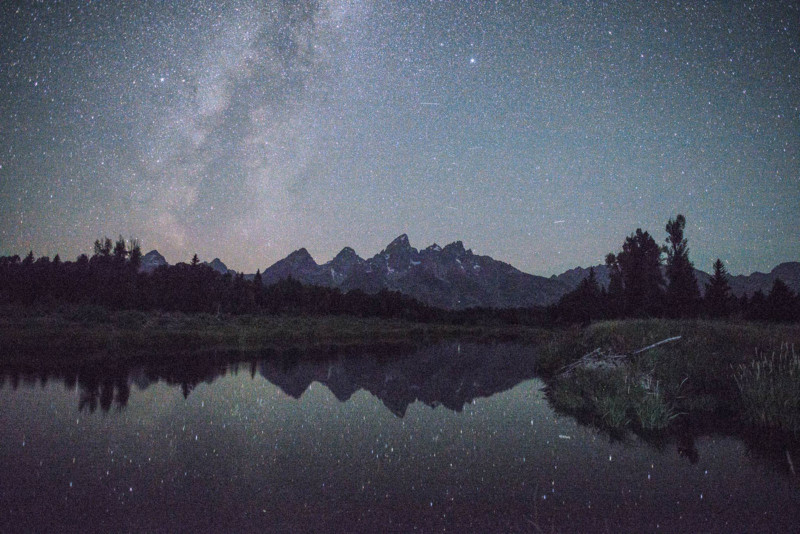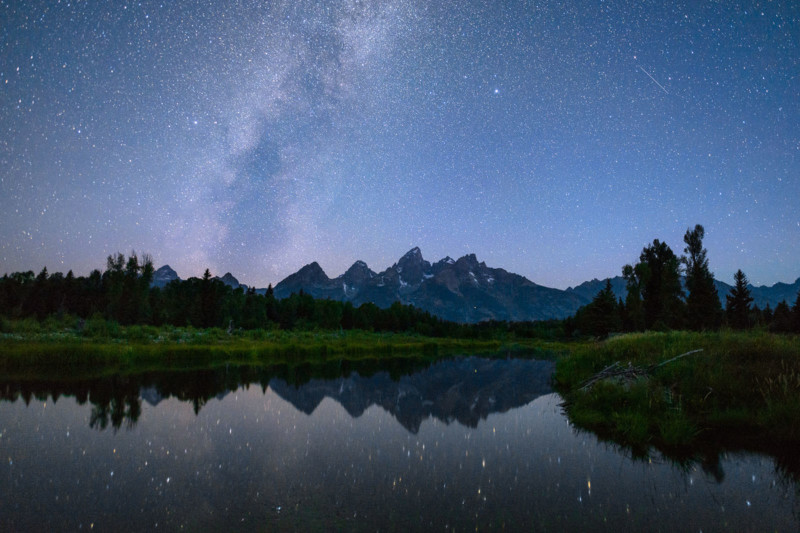An Easy Way to Compose Landscape Photos at Night
![]()
When you’re out taking nighttime landscape photos, one of the most difficult tasks is composing your photos exactly how you want. The reason? It’s simply too dark to see anything.
This is one of the few times when the best option is to use your camera’s highest ISO.
Use That Crazy ISO Value
Finally, there’s a good reason to set ISO 409600!
The idea here is to shrink your waiting time as much as possible. When you use an ultra-high ISO value, you can take photos with a much quicker shutter speed, saving you lots of time in the field. The final photo isn’t meant to be published; instead, it’s something you should use as a compositional aid.
Without this technique, your typical settings for the stars or Milky Way may look something like this:
f/2.8, 30 seconds, ISO 1600
Those settings will provide a photo that’s bright enough to use as a compositional aid. However, it will take 30 seconds of waiting to get there (and 60 seconds if you’re using long exposure noise reduction). Instead, try something like this:
f/2.8, 2 seconds, ISO 25,600
You’ll have a photo that’s just as bright, and it takes 1/15th the time to capture. The downside? Your image quality will be horrible — but that doesn’t matter. You’re not actually going to use this photo or publish it. The photo only exists as a way for you to “see in the dark,” and narrow down your final composition more quickly.
Personally, for night photography, it often takes a handful of test photos before I find the exact composition I want. If you’re the same way, this technique can save a huge amount of time in the field, especially over the course of an entire night. Other than guessing the proper composition on your first try, this is the quickest way to capture the nighttime photo you want.
Check out the comparison below, starting with a test photo at ISO 12,800, and then my final composition at ISO 3200:


There is still a component of trial and error, which is unavoidable. But, on a dark night, when you can’t even see the scene with your own eyes, this is a much quicker way to capture the right composition. It completely eliminates 20- to 30-second delays in the field.
And, of course, you should feel free to delete the ultra-high ISO photo when you’re back from the field. It’s not something you’re likely to need… unless you’re writing an article about this technique.
Conclusion
I know this is a quick tip, and you might already be using it in the field. Still, if not, it has the potential to make a significant difference in your nighttime landscape work. Although I only started using the ultra-high-ISO technique a couple years ago, it’s quickly become one of the main steps in my night photography workflow. My hope is that you will find it equally useful.
About the author: Spencer Cox is a landscape and travel photographer from Franklin, Tennessee. The opinions expressed in this article are solely those of the author. To contact Spencer directly or view more of his work, visit his website at Spencer Cox Photography or follow him on Facebook. This article was also published here.